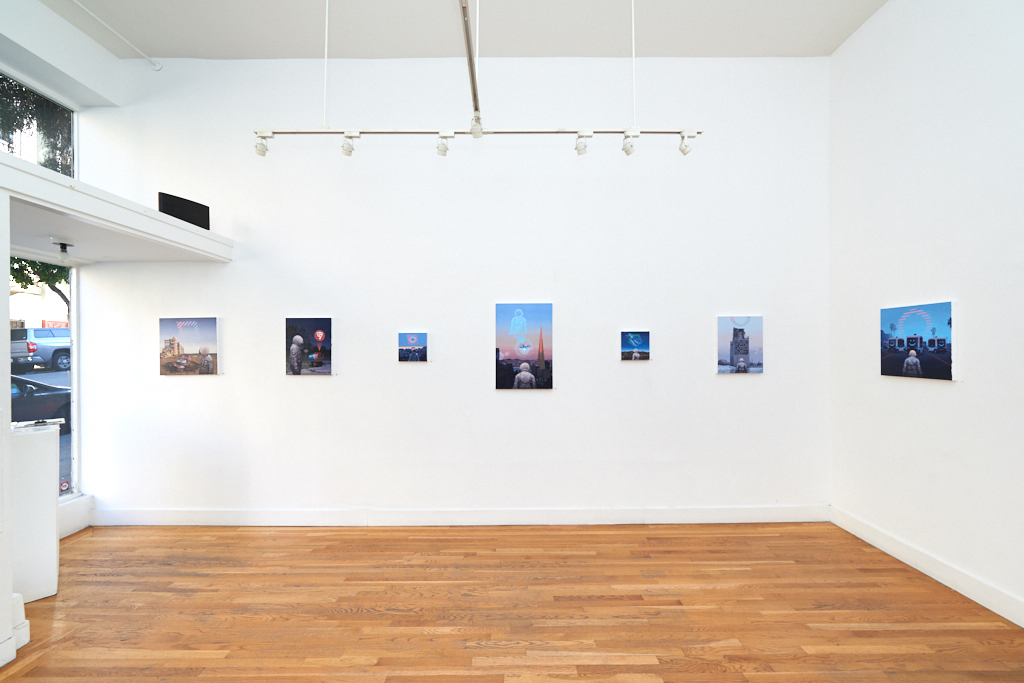As long-time fans of his work as both a gallerist and curator, we were thrilled to have Ken Harman Hashimoto step in for our first ever “Ask Me Anything” community interview! If you’re not already familiar, Ken runs three galleries — Hashimoto Contemporary (SF) , Spoke Art (NYC and SF) — as well as the The People’s Print Shop and Paragon Books. Ken kindly responded to questions submitted ahead of time as well as during the 2-hour long live session via our Booooooom Slack Community.
All our members could chat with Ken live, and we also relayed questions from non-members via our website and social channels. Questions ranged from his personal thoughts on art to whether or not artists should approach galleries via Instagram.
Big thank you to Ken for taking the time to provide many insights for the artists in our community looking to show their work in a gallery. Check out more from Ken’s AMA below along with some images created by people from our community who asked him great questions.
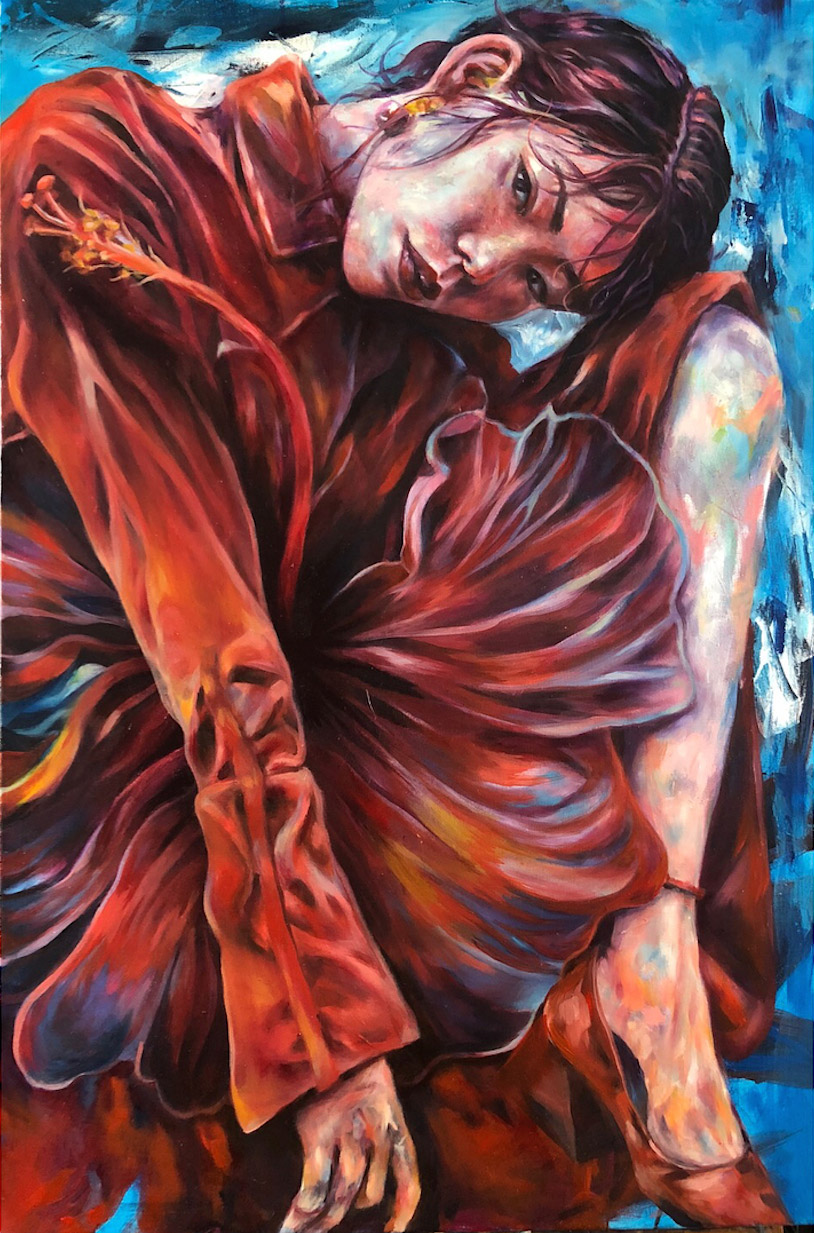
Joshua Barrigada: Can you name some art trends or styles that you could declare dead or overdone in 2018 and on the same note do you have any new or unseen movements that you predict gaining steam in the next 2-5 years?
Ken Harman Hashimoto: I don’t know if art movements ever truly “die”… even to this day we regularly get submissions from artists who identify as Abstract Expressionists, a movement that had it’s heyday 60 years ago! As to what’ll come next? Who knows! But if you find out, do let me know!
Lara Chan-Baker: What’s exciting you in art at the moment? Whether that’s to do with styles, tech, ways of working, shifts in the gallery model, etc.
Ken Harman Hashimoto: Something that I think is very exciting is the future of AR and VR in the art space. What that entails remains to be seen, but the idea of using an AR app on your phone to see what art looks like on the walls of your home, or using VR to tour a museum, gallery, or artist studio is really compelling to me and hopefully one way that upcoming tech can enrich our lives and the art world.
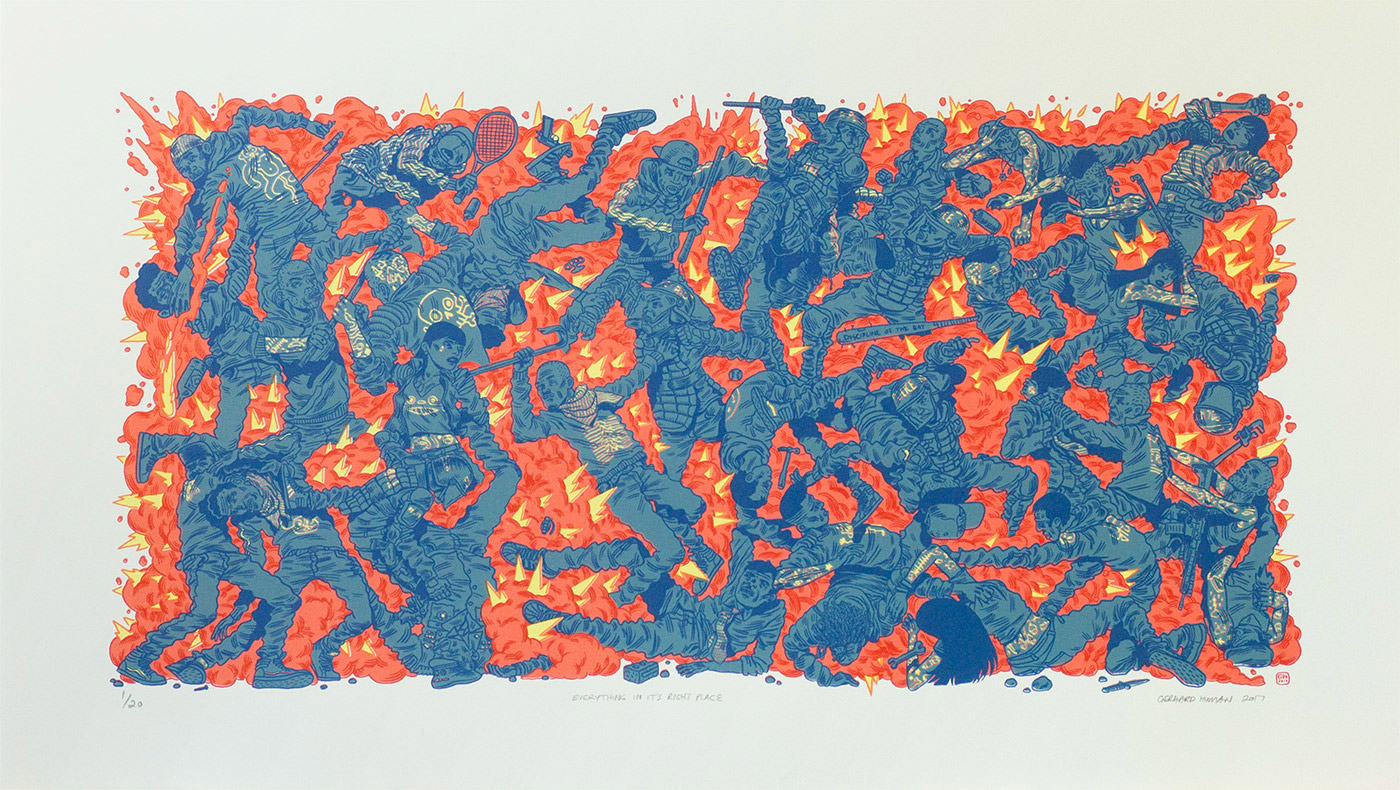
Gerhard Human: What is your definition of art? Why would one drawing be considered a piece of art worth $$$ and another merely an illustration?
Ken Harman Hashimoto: Art can be anything, truly, truly anything. Duchamp proved this in 1917 with “The Fountain” and over 100 years later we’ve continued to redefine what art is and what it can be. As to value, art at the end of the day is worth only as much as a person will pay for it.
Joe: What is the role of the art patron, aside from simply buying? What makes a good art patron?
Ken Harman Hashimoto: First and foremost, an art patron collects and supports their favorite artists. Many people find this a barrier to entry as it’s easy to assume that being an art collector is beyond the reach of your average person. However, with the proliferation of limited editions, the realization that most galleries are happy to set up a payment plan, and the fact that all artists begin their careers as ‘emerging’ (when prices are usually affordable), I’d argue that everyone should be, and can be, an art patron.
Beyond that, a great art patron not only buys work, but also engages in discourse around that work by asking questions, starting conversations, visiting galleries and artist studios, and generally taking part in the greater dialog and discourse that is contemporary art.
James Chia Han Lee: What can artists generally expect to gain from stepping into the gallery world?
Ken Harman Hashimoto: To be frank, every gallery is different and some are simply better than others. A GOOD gallery will not only display your work on its walls, but will also promote your work to the right people (such as important collectors and curators.) It will also provide a venue for people to discover your work and a place for your fans to come see your work in person. Lastly, it’ll treat your work with the respect and reverence that it deserves.
However, a GREAT gallery will go above and beyond all that by publishing monographs and catalogs, actively trying to get artists into museum and institutional exhibitions, investing in artists by bringing them to art fairs and supporting artists by buying work out of the studio. These are all things you simply can’t get by selling your own work online.
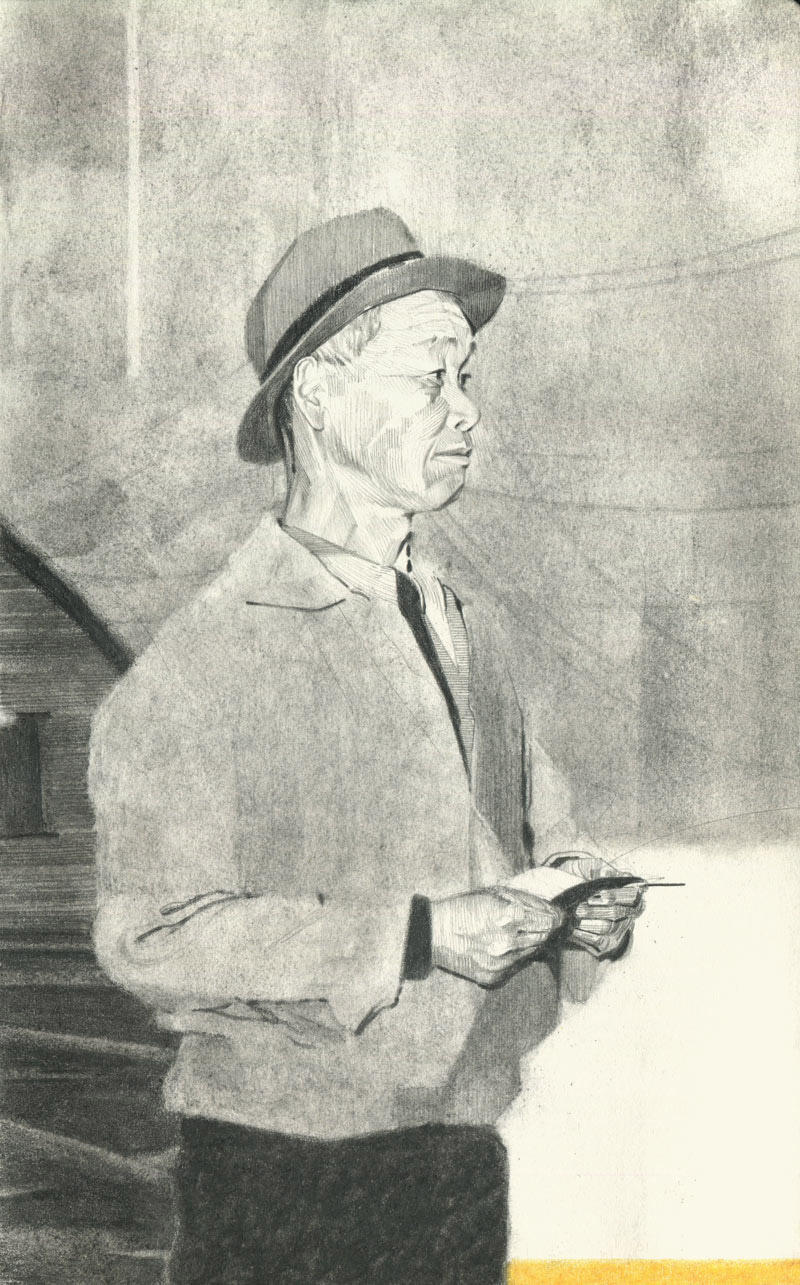
James Chia Han Lee: What’s your advice for somebody who’s looking to get their work out into galleries for the first time?
Ken Harman Hashimoto: If you’re looking to get your work into a gallery for the first time, start by finding galleries that are the best fit for you personally. Take a look at galleries you’re interested in and ask yourself a few questions:
– Does this gallery show work similar to the work I make?
– Do they show artists who I consider my contemporaries?
– Does the gallery do well with works in price points similar to my own?
– What is their submission policy?*
*Some galleries have very specific submission policies and/or don’t accept submissions. The quickest way to get off on the wrong foot with a gallery is to ignore their submission policy!

jtsaih: How should artists approach galleries? What is the process usually?
Ken Harman Hashimoto: First off, make sure the gallery is a good fit for you and your work. Approaching galleries that don’t make sense for you is a waste of everyone’s time. When you do find that gallery, start with an email. If you want to come correct, do some research first and find out the name of the gallery owner or director and personalize your email. Showing you’re familiar with the gallery and have done your research is so important.
Your email should include a link to your website, a link to your social media, and some reasons as to why you’re a good fit for the gallery and vice versa.
Lastly, if the gallery is local, be sure to attend their openings, visit their shows and events, and support them and the other galleries in your local scene. Making personal connections with the gallery, the staff, the artists, and the attendees help the great gallery ecosystem and the more you support your scene the more it’ll support you.
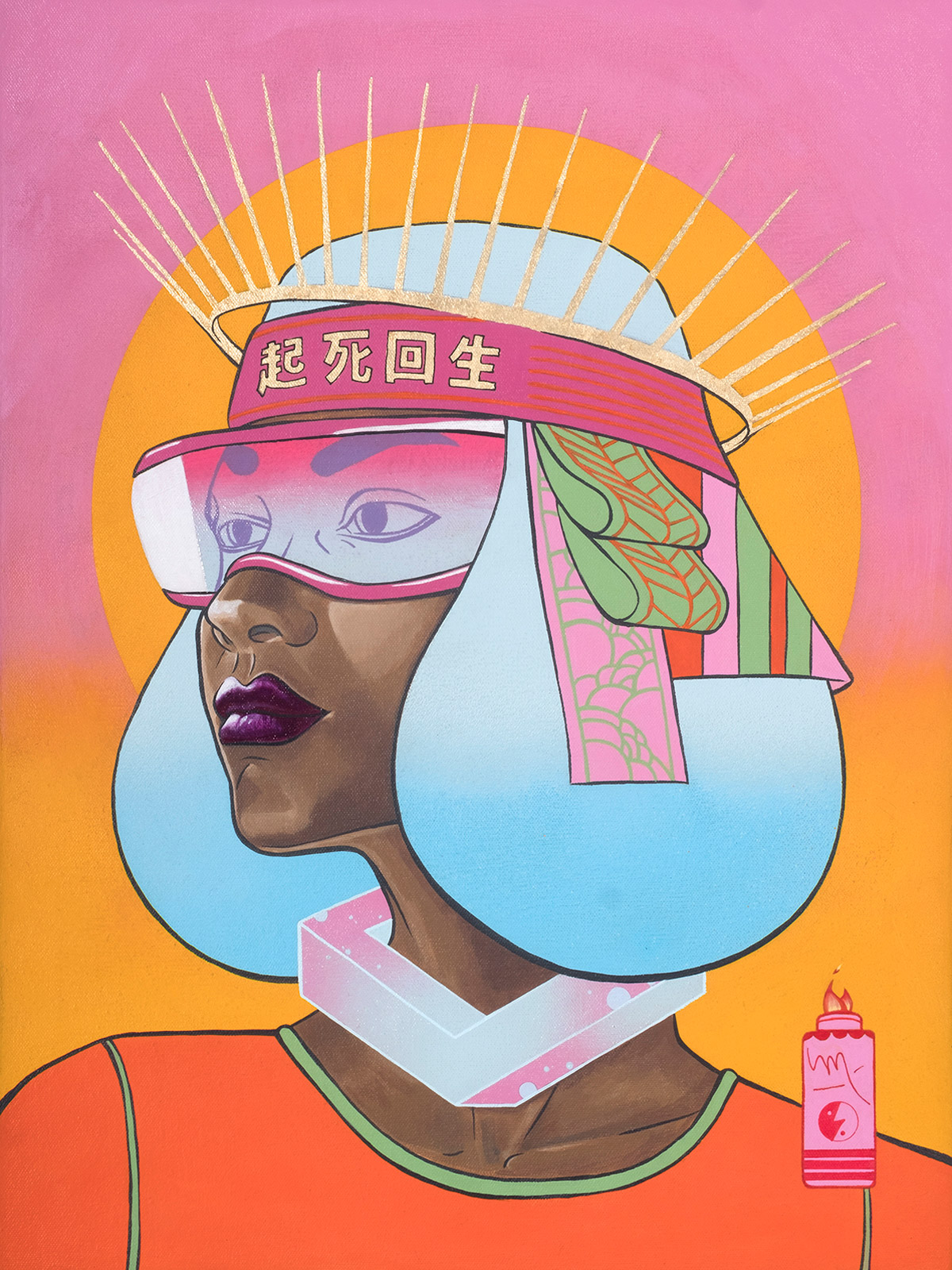
marksarmel: I feel like a big part of the gallery scene is building a relationship with the gallery/curator. I’m often not able to attend galleries that I want to work with so building that relationship is difficult. I’ve done my share of curator hunting/following online, but I feel so creepy just hitting up curators and asking them to look at my work. Do you have a preferred method for an artist to contact you in order to show you their work? How does an artist stand out in a sea of emails, tweets and IG comments?
Ken Harman Hashimoto: That’s a great observation. Relationships truly are vital, not just in the art world but in every aspect of life. Not living in a major art hub is always a hurdle but I’ll say right now that there are thousands of artists who are willing to relocate to pursue their careers. I once read that there are 80,000 self identifying artists in New York City alone, and would assume that many if not most are transplants. Obviously the vast majority of those artists may not necessarily ‘make it’, but the ones who don’t at least know they did everything they could to try.
For submissions, that’s definitely a case by case basis. I will generally say that sliding into a gallery’s DMs is probably not the best way to come across as professional!
PhilLTM: When selecting and curating art to showcase, whether it be in a book or gallery, is there a criteria that you follow? Do you select artworks to feature based on trends, themes, new innovative pieces to the art world or do you go on gut instinct and select pieces that appeal to you?
Ken Harman Hashimoto: When curating, we select works specific to whatever project or show we’re working on! Whatever the criteria of the show or book will dictate the criteria of the work.
PhilLTM: Also, what do you think separates a good art curator from a great art curator?
Ken Harman Hashimoto: I’d say that a GOOD curator has a good eye, an understanding of the art they show, and a knack for putting that all together. A GREAT curator though, has all those attributes but is able to push it one step further by thinking outside the box and doing something that hasn’t been done before.
A good analogy would be the difference between a good artist and a great artist. A good artist can make a quality portrait that’s representational of the subject…. a great artist invents Cubism.
VaGue: How does an aspiring artist approach the world of galleries today? It seems a lot of artist gather amass a ton of followers in order to be noticed nowadays. Does popularity in social media equal success?
Ken Harman Hashimoto: My advice is simply to make the best work you can and get it out there. Curators and gallerists are always online and in-person looking for new artists to discover. If your art is out there and is also what a gallery is looking for, then the connection will happen.
A large following online informs curators that you have a fan base and that’s always nice. Does it necessarily equal success? Definitely not — a ‘like’ won’t pay your bills!
With that said, it’s so easy these days for artists to sell work online, make limited editions, set up Kickstarters, Patreons, etc., that success can certainly be more attainable if you have a lot of fans or followers.
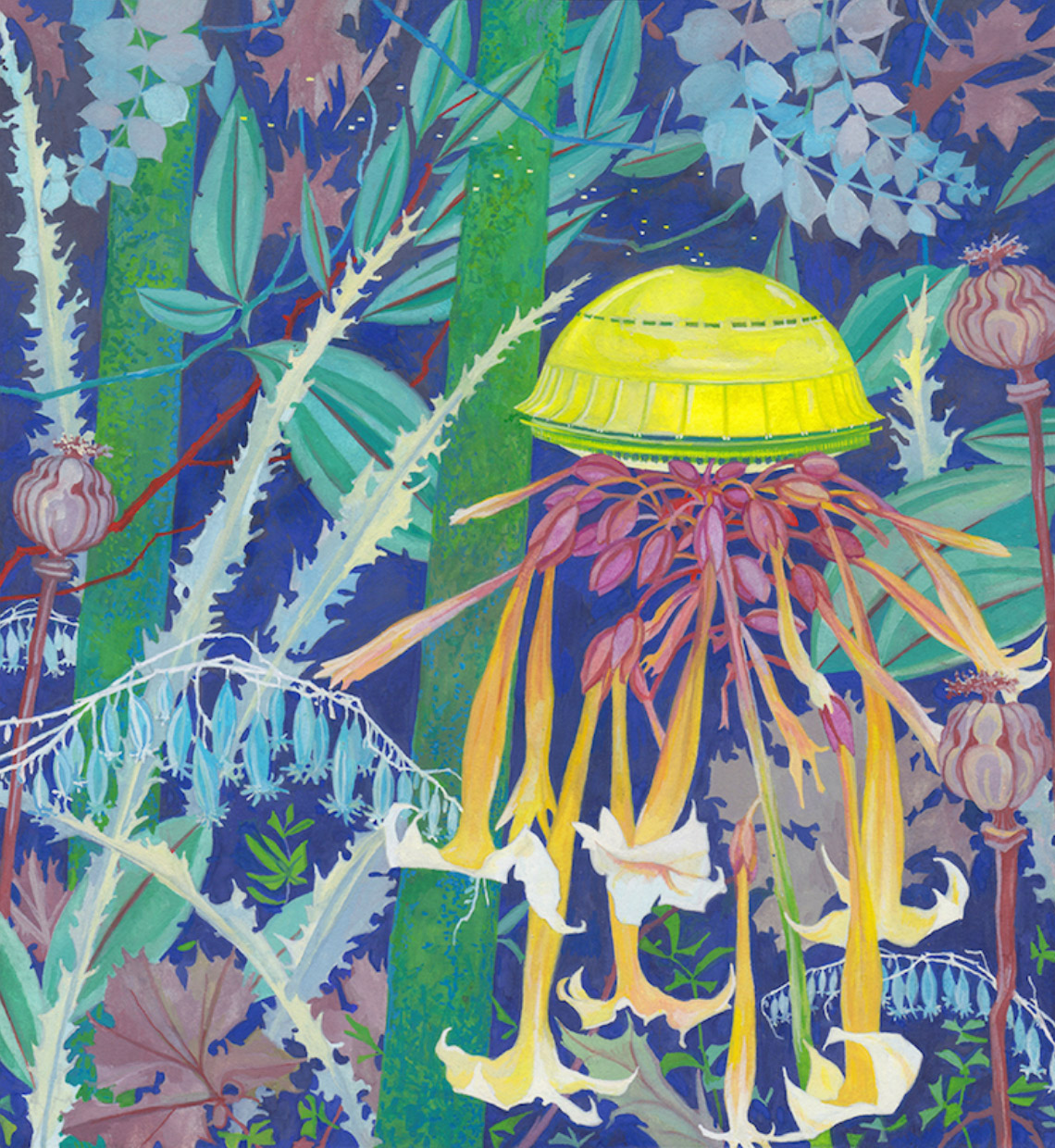
Michael Dandley: What are some challenges of selling original art online? What is the best way to document a piece so clients are comfortable buying a piece without seeing it in person?
Ken Harman Hashimoto: Selling art online has both its challenges and its rewards. Accurately showing texture and depth is always difficult online, for example. However, we’ve never lived in a time where it was so easy to sell works around the world just with a jpg!
I once read a biography of Leo Castelli, his process for selling work to people outside of New York was to take a photo or Polaroid of a painting, then mail that photo to collectors around the world… how far we’ve come!
Michael Dandley: With a growing online audience, are you ever tempted to close your brick-and-mortar locations and go completely online?
Ken Harman Hashimoto: I’m not sure if I’ll ever close my brick and mortar locations as I do think it’s important for people to see art in person. However, I do think that in the coming years you’ll see more galleries transition from “brick and mortar” to a more “project based” model where the focus isn’t 10-12 shows a year but rather 5-6 projects a year.
Those projects can range from art fairs to pop ups, to gallery swaps in new cities, to murals, to books, etc. etc. The days of the brick and mortar are slowly coming to an end and seeing how galleries navigate that in the next five years will be very interesting.
Michael Dandley: Excluding Instagram, what are your favorite tools for finding new artists?
Ken Harman Hashimoto: Instagram is truly my preferred way to find new artists (for now!)
Michael Dandley: With changes to the retail economy, and the shift towards selling online, what motivated you to open an East Coast arm of Spoke Art?
Ken Harman Hashimoto: Online art sales are definitely increasing every year, the fact that Gagosian has just begun to offer ‘online viewing rooms’ where pricing is transparent is a clear sign that the dynamic is shifting and that the big boys are taking note.
Opening a NYC location was very difficult and continues to be a challenge. However, the ability to offer our artists shows in New York (the art capital of the US, maybe the world) is so important to me. The more opportunities you give your artists, the better they’re going to do!
Michael Dandley: As a commercial space, how do you navigate exhibiting installation work that is hard to sell?
Ken Harman Hashimoto: We don’t do much installation based work, and much of that reason is simply because it is hard to sell and we’re not in a position to host shows that don’t sell.
I do wish we were though. It’s very tricky guiding a business that must balance between paying it’s bills while simultaneously showing work that is important but not necessarily sellable. I’d be miserable if I only did shows I knew would sell and refused to show works I knew wouldn’t!

Kate Wadsworth: What are your thoughts when an artist’s website URL sends you to their instagram account/a portfolio site (Behance for example) — how important is it for an artist to have a “true” stand alone website?
Ken Harman Hashimoto: Websites are slowly becoming less and less necessary and avenues like IG are becoming more and more important, no question about that. However, IG will be replaced by something else one day and when that day comes, what does an artist who’s only on IG do? Do they rebuild their entire portfolio on a new platform? Seems like a lot of work and a constant headache if popular platforms come and go regularly.
Having a website is important to me as it provides a semi-permanent place for your work to live online, regardless of the constantly changing trends in social media. One thing a website can do, beyond share images, is provide additional information that is hard to show on social media. For example, a full artist statement, a C.V., a bio, all of those things are very important for artists to have but not necessarily easy to convey on IG.
Lastly, websites don’t have a barrier to entry, but things like IG or Behance do. An older collector, for example, may not have an IG account and as such may not be able to see your work if it’s only shown there.
Kate Wadsworth: As a man who wears many hats, what is your daily routine like?
Ken Harman Hashimoto: My daily routine is pretty consistent. I start with a quick social media check in bed or on the couch, followed by coffee, then off to work! From there, it’s juggling the 100+ emails I get, coordinating with our West Coast and East Coast teams on daily tasks and projects. I usually take a lunch at around 1pm (sometimes my first meal of the day) and use that time to check all our social media channels.
For the second half of my day, I tackle the new emails, issues, problems and concerns that have come up that day. I usually devote time to our warehouse team as well so I can be on hand to make sure all our production projects are on track. I usually end work by 6 or 7 and from there grab dinner and drinks. With all that we have going on, I drink a lot. The evenings are spent with a joint and some Netflix. Six hours later I’m awake and back to work!
Kate Wadsworth: What are some unexpected successes/failures/happy accidents/learning moments that you’ve experienced during your career?
Ken Harman Hashimoto:
– Unexpected successes? The fact that the galleries exist, and are still open!
– Unexpected failures? Losing artists to other galleries, that’s usually the one that hurts the most (luckily it only has happened once, maybe twice.)
– Happy accidents? Honestly, all of this. The world works in very strange ways sometimes and I attribute any success I have to 50% luck.
– Learning moments? I know it’s cliche, but every day. Something that’s interesting about the gallery world is that every month is different as every show presents unique challenges.
Kate Wadsworth: Assuming Hashimoto Contemporary is your namesake, how did you settle on the name Spoke-Art?
Ken Harman Hashimoto: The name Spoke Art is pretty random. In 2010 I was working at a restaurant and writing for an art magazine on the side. I started curating art shows and it eventually reached a point where I needed a name to work under. To be completely honest, I never thought that the small pop up shows I was doing at the time would ever lead anywhere. If I knew that my life would unfold the way it did, I probably would have given more thought to a name at the time!
But, as a friend once said: If I told you I was opening an online bookstore, you would tell me that “Amazon” is a stupid name and doesn’t have anything to do with books. Alternatively, a “Face-Book” is sorta nonsensical, a “Google” isn’t even a word, and a “Yahoo” is a brutish species of monsters invented by Jonathan Swift for Gulliver’s Travels. So…. yeah, I guess that sums it up!
Supersonic: If you could rename Spoke Art, what would you name it now?
Ken Harman Hashimoto: Anything else, literally. Send suggestions plz.
Jeff: Where did the original name come from — like is it Spoke as in a wheel?
Ken Harman Hashimoto: I think it was a combination of a couple things. There is an art fair called Scope Art so Spoke Art didn’t seem too far off. At the time I was trying to convey the idea of art ‘speaking’ to a person, or the idea that art can create a ‘conversation’. Sadly, people just assume we sell bicycle art or specialize in spoken word — ce la vie!
Jeff: I feel like Spoke has sorta paved the way for film-based art shows — can you talk a bit about that?
Ken Harman Hashimoto: Our first pop culture shows were initially inspired by what we saw our friends at Gallery 1988 (LA) and Mondo (Austin) doing. Bringing something similar to San Francisco (while doing it in our own way) was a major jumping off point for us.
To be frank, if our first Wes Anderson art show never happened in 2010, I don’t know if we’d be here today. He was so generous and supportive too.
Jeff: What has running a gallery (many galleries) taught you about yourself?
Ken Harman Hashimoto: Honestly? That I can do something of value and make something out of myself. As someone who never went to college and barely graduated high school, it was pretty unlikely that I’d ever own my own business let alone on the scale that I have. Being able to do all that I have done (and by myself and on my own terms) has taught me that anything is possible if you’re willing to put in the hard work, make the right gambles and have some luck on your side.
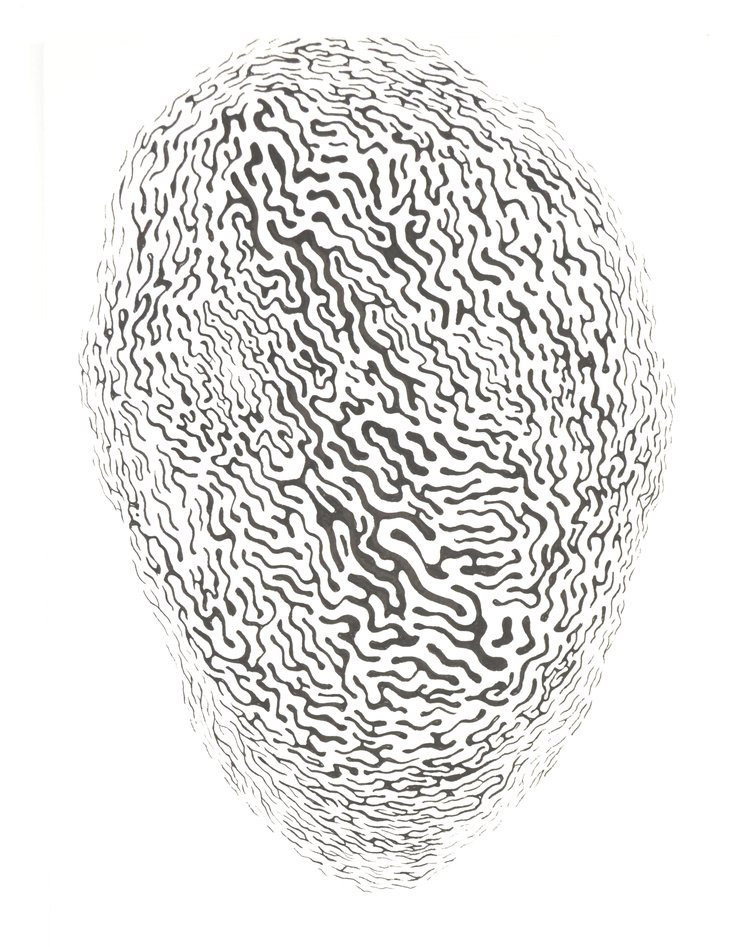
Tim B: In the age of Instagram “document everything culture” do you as a gallerist feel a need to keep art from an artists up coming show somewhat confidential or “underwraps” until the exhibition?
Ken Harman Hashimoto: I prefer artists to share work in advance of a show. Most of our sales happen before a show opens, so the more excited a collector is in advance the better a show will do!
Tim B: How do you feel about patrons going over your head for sales and or private commissions during a show or even after it has been taken down?
Ken Harman Hashimoto: Both collectors and artists should know better than to go around a gallery during a show or afterwards. Much as it’s the responsibility of a gallery to support their artists and collectors, it is also the responsibility of the collector and the artist to support the gallery.
Going around the gallery may get you a cheaper piece or something bespoke, but seeing your favorite gallery go out of business doesn’t do anything in the long term for either the artist or the collector!

Damaris Riedinger: Is it absolute necessary to have to have a series/an issue/an overall theme in order to exhibit?
Ken Harman Hashimoto: I don’t know if it’s absolutely necessary to have an existing series to exhibit, but it certainly helps. Keep in mind that owning a gallery is a very expensive and stressful occupation. It can be incredibly risky working with an artist if you don’t know what you’re going to get!
AL B: Whose work is that in the Hashimoto Contemporary, San Francisco image?
Ken Harman Hashimoto: That’s Kate Klingbeil! She’s amazing and I am expecting great things from her in the years to come.
If you’re in NYC you can see her work on view now with Paul Kasmin, alongside Lisa Yuskavage and Yoko Ono. If you’re in SF, you can see her solo show at Hashimoto, but it closes this Saturday so hurry on down!
marksarmel: Do you see any difference in the perception of value of work that is digitally produced vs traditional methods?
Ken Harman Hashimoto: This is such a debate and truly takes on so many forms, even beyond the digital vs analog conversation. Oil painters vs. acrylic painters? That’s a classic one. Screen printers vs. giclee printers? Another biggie. Representational art vs. Conceptual art? Don’t get either side started.
My biggest concern about art made digitally is that often digital work looks great in the moment but doesn’t necessarily age well. Remember how mind blowing the special effects in The Matrix were at the time? Yeah, try rewatching that today… doesn’t look as good as you remember, right?
So, how is a digital painting going to look in 10 years? How much will technology advance in that time? Would you feel comfortable buying something, especially something expensive, if it’s possibly going to look dated? With that said, some digital programs require as much time, training and technical skill as oil painting does.
At the end of the day, I like if I like it. Putting an emphasis on how it’s made over how it looks, what it does, or what it says is bad way to look at art (or anything really!)
Jeff: Before you go, can you let us know what shows you have coming up, prints being released, books being published, hit us with everything to look out for!
Ken Harman Hashimoto: Thank you Jeff! This was a lot of fun and I hope at least a couple folks were able to walk away with some new insights. In the next few months we’ve got a ton going on, please visit us if you live in or find yourself in any of the following cities:
– New York (Spoke) : Moleskine Project group show and book release this August followed by solo shows with Mike Davis, Scott Scheidly, Brian M Viveros and Michael Reeder through the end of the year.
– San Francisco (Hashimoto): Solo show by Ravi Zupa this August followed by solo shows with Gregory Euclide, Crystal Wagner, Seonna Hong, and Joel Daniel Phillips through the end of the year.
– San Francisco (Spoke): Solo show by Nadezda this August followed by solo shows with Helice Wen, Amy Sol, Laura Berger and a group show curated by PaintGuide through the end of the year.
– London (Spoke): Solo show with Erik Jones at the Moniker Art Fair in October.
– Los Angeles (Spoke): Our third Miyazaki inspired art show in August, as well as ComplexCon and Designer Con in November.
– Seattle (Hashimoto): the Seattle Art Fair with Gregory Euclide and Peter Gronquist this August.
– Chicago (Spoke): Our touring 12″x12″ group show coming to Vertical Gallery this September.
– Miami (Hashimoto and Spoke): Art Basel Miami, not sure which fair we’re doing just yet as that’s not till December.
Sure I’m forgetting at least one or two things, but that’s about the gist of it! Thanks again ya’ll!
Related Articles
